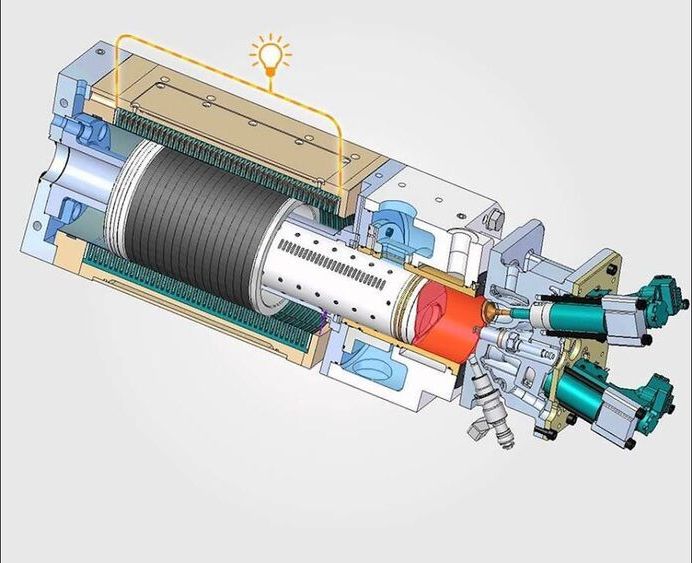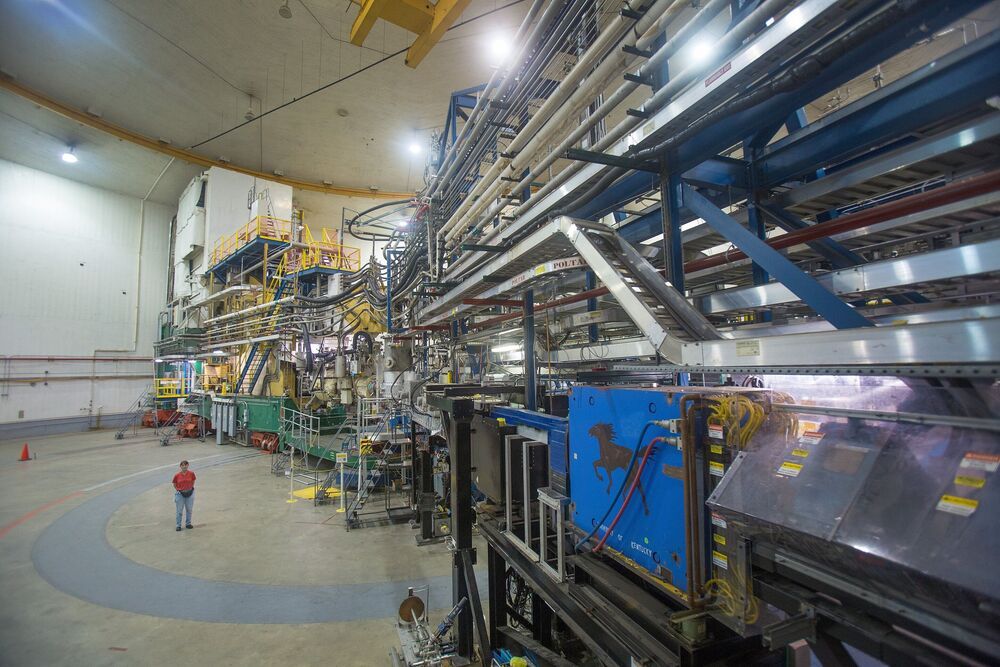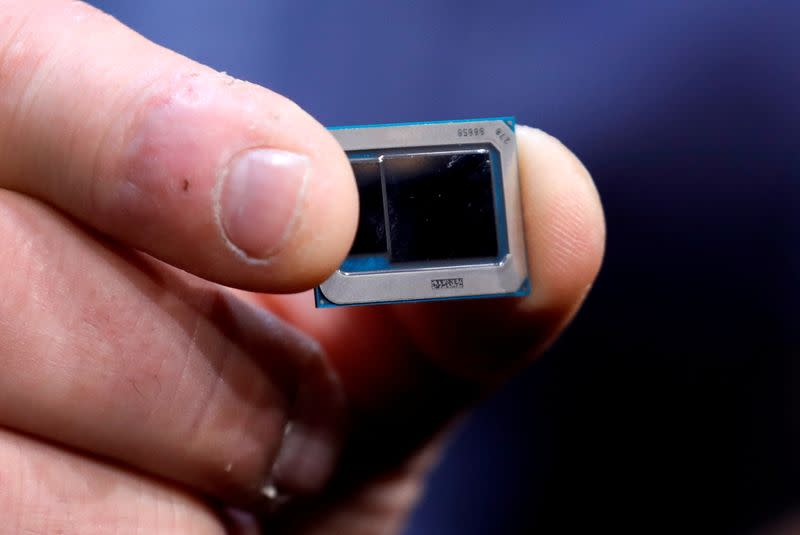Page 5448
Apr 27, 2021
Nvidia Entangled in Quantum Simulators
Posted by Quinn Sena in categories: computing, information science, quantum physics
Quantum simulators are a strange breed of systems for purposes that might seem a bit nebulous from the outset. These are often HPC clusters with fast interconnects and powerful server processors (although not usually equipped with accelerators) that run a literal simulation of how various quantum circuits function for design and testing of quantum hardware and algorithms. Quantum simulators do more than just test. They can also be used to emulate quantum problem solving and serve as a novel approach to tackling problems without all the quantum hardware complexity.
Despite the various uses, there’s only so much commercial demand for quantum simulators. Companies like IBM have their own internally and for others, Atos/Bull have created these based on their big memory Sequanna systems but these are, as one might imagine, niche machines for special purposes. Nonetheless, Nvidia sees enough opportunity in this arena to make an announcement at their GTC event about the performance of quantum simulators using the DGX A100 and its own custom-cooked quantum development software stack, called CuQuantum.
After all, it is probably important for Nvidia to have some kind of stake in quantum before (and if) it ever really takes off, especially in large-scale and scientific computing. What better way to get an insider view than to work with quantum hardware and software developers who are designing better codes and qubits via a benchmark and testing environment?
Apr 27, 2021
Google performed the first quantum simulation of a chemical reaction
Posted by Quinn Sena in categories: chemistry, computing, particle physics, quantum physics
Circa 2020 o.,.o!
By Leah Crane.
Google researchers have used a quantum computer to simulate a chemical reaction for the first time. The reaction is a simple one, but this marks a step towards finding a practical use for quantum computers.
Continue reading “Google performed the first quantum simulation of a chemical reaction” »
Apr 27, 2021
Decoding Quantum Errors Using Subspace Expansions
Posted by Quinn Sena in categories: computing, quantum physics
O,.o circa 2020.
With the rapid developments in quantum hardware comes a push towards the first practical applications on these devices. While fully fault-tolerant quantum computers may still be years away, one may ask if there exist intermediate forms of error correction or mitigation that might enable practical applications before then. In this work, we consider the idea of post-processing error decoders using existing quantum codes, which are capable of mitigating errors on encoded logical qubits using classical post-processing with no complicated syndrome measurements or additional qubits beyond those used for the logical qubits. This greatly simplifies the experimental exploration of quantum codes on near-term devices, removing the need for locality of syndromes or fast feed-forward, allowing one to study performance aspects of codes on real devices. We provide a general construction equipped with a simple stochastic sampling scheme that does not depend explicitly on a number of terms that we extend to approximate projectors within a subspace. This theory then allows one to generalize to the correction of some logical errors in the code space, correction of some physical unencoded Hamiltonians without engineered symmetries, and corrections derived from approximate symmetries. In this work, we develop the theory of the method and demonstrate it on a simple example with the perfect [[5, 1, 3]] code, which exhibits a pseudo-threshold of p≈0.50 under a single qubit depolarizing channel applied to all qubits. We also provide a demonstration under the application of a logical operation and performance on an unencoded hydrogen molecule, which exhibits a significant improvement over the entire range of possible errors incurred under a depolarizing channel.
Apr 27, 2021
Physicists net neutron star gold from measurement of lead
Posted by Saúl Morales Rodriguéz in categories: chemistry, particle physics, space
Nuclear physicists have made a new, highly accurate measurement of the thickness of the neutron “skin” that encompasses the lead nucleus in experiments conducted at the U.S. Department of Energy’s Thomas Jefferson National Accelerator Facility and just published in Physical Review Letters. The result, which revealed a neutron skin thickness of .28 millionths of a nanometer, has important implications for the structure and size of neutron stars.
The protons and neutrons that form the nucleus at the heart of every atom in the universe help determine each atom’s identity and properties. Nuclear physicists are studying different nuclei to learn more about how these protons and neutrons act inside the nucleus. The Lead Radius Experiment collaboration, called PREx (after the chemical symbol for lead, Pb), is studying the fine details of how protons and neutrons are distributed in lead nuclei.
“The question is about where the neutrons are in lead. Lead is a heavy nucleus—there’s extra neutrons, but as far as the nuclear force is concerned, an equal mix of protons and neutrons works better,” said Kent Paschke, a professor at the University of Virginia and experiment co-spokesperson.
Apr 27, 2021
J&J Bets Up to $780 Million on Cidara’s Universal Influenza Treatment
Posted by Quinn Sena in category: biotech/medical
josefkubes/Shutterstock
Cidara Therapeutics inked a deal worth up to $780 million with Johnson & Johnson to develop and commercialize Cidara’s candidate CD388 for the prevention and treatment of seasonal and pandemic influenza.
San Diego-based Cidara Therapeutics will receive an upfront payment of $27 million from Janssen, a division of J&J for the development of CD388, one of Cidara’s Cloudbreak antiviral conjugates (AVCs). Cidara, which is focusing on the development of therapeutics for serious fungal or viral infections, said CD388 has the potential to be a true universal preventative for the flu, with distinct advantages over vaccines that can be used across all populations, including the young, elderly and immunocompromised. Additionally, the company believed CD388 is capable of providing protection from all influenza strains, including seasonal and pandemic influenza A, influenza B and all major clinically characterized drug resistant influenza strains. Not only that, but Cidara suggests CD388 could provide a therapeutic role, such as the widely-used Tamiflu.
Apr 27, 2021
Toyota develops high-efficiency ‘free piston’ no-crankshaft combustion engine… to power an EV
Posted by Quinn Sena in category: futurism

Circa 2014 o.o!
A new design for a piston-free linear engine generator has just been released by Toyota. With remarkable efficiency, the device might be scaled up to compete with electric power plants used in cars today.
Apr 27, 2021
Deepfake satellite imagery poses a not-so-distant threat, warn geographers
Posted by Genevieve Klien in categories: military, robotics/AI, satellites
Deepfakes from above.
Deepfakes are usually associated with imagery of AI-generated people, but what about fake satellite imagery? Geographers say such deepfakes could be used to spread misinformation and even mislead the military.
Apr 27, 2021
Intel’s Mexico unit sees ‘light at end of tunnel’ in chip shortages
Posted by Genevieve Klien in categories: computing, transportation
MEXICO CITY (Reuters) — A global semiconductor chip shortage, which has hurt Mexico’s auto industry, could improve but still not be fully resolved by the end of the year, said the head of Intel Corp’s Mexico unit, Santiago Cardona.
Intel in late March said it will greatly expand its advanced chip manufacturing capacity with plans to spend as much as $20 billion to build two factories in Arizona and open its factories to outside customers.
Apr 27, 2021
DoD wants new ideas for real-time spectrum sharing
Posted by Genevieve Klien in category: robotics/AI
WASHINGTON — The Department of Defense wants to see a prototype that can ensure spectrum is available whenever it’s needed for aerial combat training, according to an April 26 request from the National Spectrum Consortium.
The effort, focused specifically on the Operational Spectrum Comprehension, Analytics, and Response (OSCAR) project, is part of a larger portfolio included in the DoD’s office of research and engineering’s Spectrum Access Research & Development Program. That program hope to develop near real time spectrum management technologies that leverage machine learning and artificial intelligence to more efficiently and dynamically allocate spectrum assignments based on operational planning or on operational outcomes, a release said.
“I think of this set of projects as a toolset that’s really the beginning of starting to move toward pushing those fundamental technologies into more direct operational application,” Maren Leed, executive director of the National Spectrum Consortium, told C4ISRNET. It’s “starting to bridge from just sharing with commercial into capabilities that are going to enable warfighting much more directly.”

















